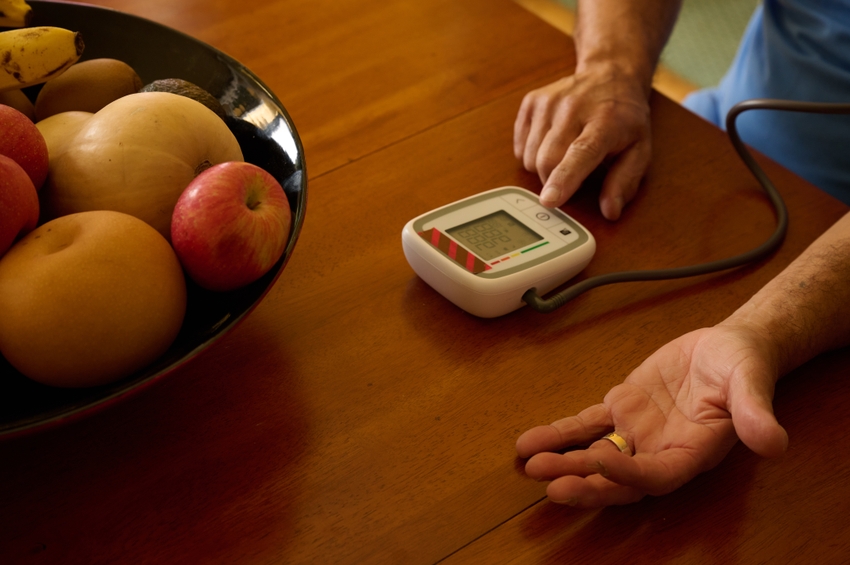CWRU School of Medicine’s Akua Abrah earns Fulbright award to combat a common cause of infant mortality in Ghana – The Daily | Case Western Reserve University

Project Overview: Fulbright-Fogarty Fellowship in Public Health
Researcher and Affiliation
- Akua Abrah, Fourth-Year Medical Student
- Cleveland Clinic Lerner College of Medicine of Case Western Reserve University
- Andrew B. Kaufman World Medicine Pathway Scholar
Project Focus
A nine-month research initiative in Kumasi, Ghana, to conduct a screening study of glucose-6-phosphate dehydrogenase (G6PD) deficiency in newborns. The project aims to address the high rates of neonatal morbidity and mortality associated with the condition in sub-Saharan Africa, which has the highest global burden.
Alignment with Sustainable Development Goals (SDGs)
SDG 3: Good Health and Well-being
The project’s primary objective is to advance SDG 3, specifically Target 3.2, which aims to end preventable deaths of newborns and children under five years of age. Key contributions include:
- Addressing neonatal jaundice, a major cause of infant morbidity and mortality in the region.
- Investigating G6PD deficiency, a condition with an estimated prevalence of 7-20% in Ghana.
- Evaluating the feasibility of implementing nationwide screening protocols, as recommended by the World Health Organization for countries where prevalence exceeds 5%.
SDG 10: Reduced Inequalities
The initiative seeks to reduce health inequalities by focusing on a resource-limited setting where access to specialized neonatal care is lacking. The project addresses this by:
- Introducing advanced screening methods in a region where many health facilities are not equipped with necessary treatment devices like phototherapy.
- Assessing the cost-effectiveness of integrating G6PD screening into routine care, potentially making it accessible across the country and reducing disparities in health outcomes.
SDG 17: Partnerships for the Goals
This research is founded on multi-stakeholder partnerships, a cornerstone of SDG 17. The collaboration involves:
- Academic Institutions: Cleveland Clinic Lerner College of Medicine.
- International Fellowships: Fulbright-Fogarty Fellowship in Public Health.
- Research Consortia: The Northern Pacific Global Health Research Fellows Training Consortium.
- Local Healthcare Providers: Suntreso Government Hospital in Kumasi, Ghana.
- Community Engagement: Collaboration with local government, community leaders, doctors, nurses, and families to ensure program feasibility.
SDG 4: Quality Education
A component of the project is dedicated to health education, contributing to SDG 4. This is achieved through the provision of educational materials to parents of newborns, empowering them with knowledge about G6PD deficiency and its management to improve health literacy and outcomes.
Methodology and Long-Term Impact
Research Activities
- Screening newborns for G6PD deficiency at Suntreso Government Hospital.
- Conducting a 28-day follow-up study to monitor for jaundice-related complications.
- Engaging with community stakeholders to gain insights into the feasibility of a nationwide screening program.
- Analyzing the cost-effectiveness of incorporating G6PD screening into routine neonatal care in Ghana.
Future Aspirations
The findings from this project are intended to inform public health policy in Ghana. The researcher, Akua Abrah, aspires to practice neonatology in both the United States and resource-limited settings across sub-Saharan Africa, fostering sustained improvements in global health and contributing to the long-term achievement of the SDGs.
Analysis of SDGs, Targets, and Indicators
1. Which SDGs are addressed or connected to the issues highlighted in the article?
-
SDG 3: Good Health and Well-being
This is the most prominent SDG in the article. The entire project described, led by Akua Abrah, is focused on public health, specifically “combatting infant mortality” in Ghana. The research targets neonatal jaundice and Glucose-6-Phosphate Dehydrogenase (G6PD) deficiency, which are significant causes of newborn morbidity and mortality. The article highlights the high burden of these conditions in sub-Saharan Africa and the lack of adequate screening and treatment facilities in Ghana, directly aligning with the goal of ensuring healthy lives and promoting well-being for all at all ages.
-
SDG 17: Partnerships for the Goals
The article emphasizes the collaborative nature of the project. Akua Abrah’s work is made possible through a “Fulbright-Fogarty Fellowship in Public Health.” She is partnering with the “Suntreso Government Hospital” in Kumasi and the “Northern Pacific Global Health Research Fellows Training Consortium.” Furthermore, a key part of her work involves engaging with “key stakeholders, including local government leadership, community members, doctors, nurses, town leaders and more.” This multi-stakeholder approach to addressing a public health challenge exemplifies the spirit of SDG 17.
2. What specific targets under those SDGs can be identified based on the article’s content?
-
Target 3.2: End preventable deaths of newborns and children under 5 years of age.
The article explicitly states the project’s goal is “Combatting infant mortality.” By conducting a screening study for G6PD deficiency, a condition that can cause a “deadly increase of bilirubin in newborns,” the project directly aims to reduce preventable neonatal deaths. The focus on the first 28 days of life, monitoring for jaundice-related complications, is a direct action towards achieving this target.
-
Target 3.8: Achieve universal health coverage, including access to quality essential health-care services.
The project seeks to “assess the cost-effectiveness of including G6PD deficiency screening into routine neonatal care across Ghana.” This research is a foundational step toward integrating a new, essential health service into the national healthcare system. The article notes that Ghana has not yet adopted nationwide screening despite WHO recommendations, and this project aims to provide the evidence to make this service accessible and routine, a key component of universal health coverage.
-
Target 3.d: Strengthen the capacity of all countries… for early warning, risk reduction and management of national… health risks.
The screening program for G6PD deficiency is a form of early warning and risk reduction. By identifying at-risk newborns, the project allows for early intervention to prevent severe complications from neonatal jaundice. The article mentions the WHO’s suggestion for “nationwide screening protocols,” and Abrah’s work to determine the “feasibility of such a program” contributes directly to strengthening Ghana’s capacity to manage this specific national health risk.
-
Target 17.16: Enhance the global partnership for sustainable development, complemented by multi-stakeholder partnerships.
The project is a model of this target. It involves an international fellowship (Fulbright-Fogarty), a U.S. university (Case Western Reserve University), a research consortium (Northern Pacific Global Health Research Fellows Training Consortium), a local Ghanaian hospital (Suntreso Government Hospital), and local community leaders. This partnership mobilizes knowledge, research expertise, and resources to address a health challenge in Ghana.
3. Are there any indicators mentioned or implied in the article that can be used to measure progress towards the identified targets?
-
Neonatal Mortality Rate (Indicator 3.2.2)
The article’s focus on “neonatal jaundice-related morbidity and mortality” and the overall goal of “combatting infant mortality” directly implies that the neonatal mortality rate is the key high-level indicator. The project’s success would ultimately be measured by a reduction in this rate in the region.
-
Prevalence of G6PD deficiency and incidence of related complications
The article states the prevalence of G6PD deficiency is estimated to be “between 7 and 20% in Ghana.” The project itself will “screen newborns for G6PD deficiency and follow them over a 28-day period… to monitor for jaundice-related complications.” The data collected on the number of newborns screened, the number identified with the deficiency, and the incidence of complications are direct, measurable indicators of the problem’s scale and the project’s impact.
-
Coverage of essential health services (related to Indicator 3.8.1)
The project’s aim to assess the feasibility of including G6PD screening in “routine neonatal care” implies an indicator related to service coverage. Progress would be measured by the proportion of newborns in a given area (initially the Suntreso Government Hospital) who receive this screening. The ultimate goal is to expand this coverage nationwide.
-
Existence of multi-stakeholder partnerships (related to Indicator 17.16.1)
The article explicitly names the partners involved: the Fulbright-Fogarty Fellowship, the Northern Pacific Global Health Research Fellows Training Consortium, and the Suntreso Government Hospital. The existence and operational success of this collaborative project serve as a direct indicator of a functioning multi-stakeholder partnership for sustainable development.
4. Summary Table of Findings
| SDGs | Targets | Indicators |
|---|---|---|
| SDG 3: Good Health and Well-being |
Target 3.2: End preventable deaths of newborns and children under 5 years of age.
Target 3.8: Achieve universal health coverage, including access to quality essential health-care services. Target 3.d: Strengthen the capacity of all countries for early warning, risk reduction and management of national health risks. |
Neonatal mortality rate (Indicator 3.2.2): Implied by the goal of combatting “infant mortality” and “neonatal jaundice-related morbidity and mortality.”
Coverage of essential health services: The project aims to make G6PD screening part of “routine neonatal care,” measuring the proportion of newborns receiving the service. Health risk management capacity: The project provides evidence for adopting “nationwide screening protocols” as suggested by the WHO. |
| SDG 17: Partnerships for the Goals | Target 17.16: Enhance the global partnership for sustainable development, complemented by multi-stakeholder partnerships. | Existence of multi-stakeholder partnerships: The article details the collaboration between the Fulbright-Fogarty Fellowship, a research consortium, a local hospital, and community stakeholders. |
Source: thedaily.case.edu

What is Your Reaction?
 Like
0
Like
0
 Dislike
0
Dislike
0
 Love
0
Love
0
 Funny
0
Funny
0
 Angry
0
Angry
0
 Sad
0
Sad
0
 Wow
0
Wow
0













































































